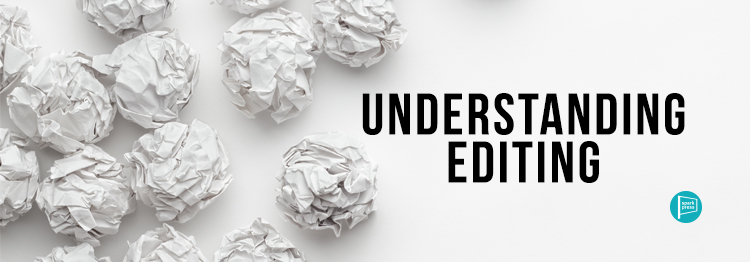
As you begin your publishing journey, your book may go through a handful of edits. But what are these different edits, and why do you need them?
Proofread
While all publishers have their own processes for editing and proofreading, at SparkPress, all titles are required to go through a proofread before moving through the book design process. Like most publishers, we use the Chicago Manual of Style as our style guide. A proofread is the last official edit before we go to layout. It focuses mainly on style issues or any blatant grammatical or spelling errors. Little things, like skipping the oxford comma, using two en-dashes instead of an em-dash, or using the straight quotation marks instead of the curly ones, are common style errors that are fixed at this stage. A proofreader will also read for syntax. They may make changes if you have used the same word too many times, or they find a section confusing. The proofreader’s goal here is clarity.
Copyedit
We also ask all of our SparkPress authors to get a copyedit once they are signed to our imprint. Many come to us with already-copyedited manuscripts, so those can skip ahead to the proofread if they made Track 1 upon submission. Copyediting is closer to what people think of when they want something edited. A copyeditor looks for spelling and grammar mistakes, corrects syntax and issues with tenses, and addresses story flow and sentence structure. They catch typos, fix punctuation marks, and break up run-on sentences. Sometimes, with a deeper copyedit, an editor might reorganize paragraphs, rewrite sentences to improve readability, and ensure consistency (for example, if a character’s name changes or an event seems confusing). Their goal is to make sure that the writing is technically solid.
Developmental Edit
Generally, only Track 3 authors go to developmental editing. However, there are occasions when after a copyedit and/or proofread, we find that the book was not quite where we thought it was based on the submission. These books also get a developmental edit. A developmental editor’s job includes some of the tasks that might come with a deeper copyedit, and to find where the manuscripts weak spots are and suggest ways to fix them. A common issue is the climax. A developmental editor may find it comes to early or too late in the book. Also, they may find that it doesn’t feel climactic enough. They would suggest where to cut, where to expand, where to heighten, and what could be moved for better story flow. They address issues like promise unfulfilled, info dumping, pacing, structure, and so much more.
More
At SparkPress you will also be assigned an editorial manager. While not an official editor, they are another set of eyes on your manuscript, your main point of contact, and the biggest champions of your book. They will be with you through the publication process—not just these edits, but through metadata management and design as well. Your editorial manager will still be there to add awards to your Amazon page and change the price of your ebook for a sale long after your book has come out.
All of the developmental editors, copyeditors, and proofreaders we work with have been personally vetted by our publisher, Brooke Warner. We’ve worked with them for years and have long-standing relationships with them. You can go elsewhere for your developmental edit and/or copyedit and still publish with us. However, a proofread by one of our proofreaders is required. A proofread is included in the cost of a publishing package, but copyedits and developmental edits are not.
What other questions do you have about the editing process? Let us know below!

Leave A Comment